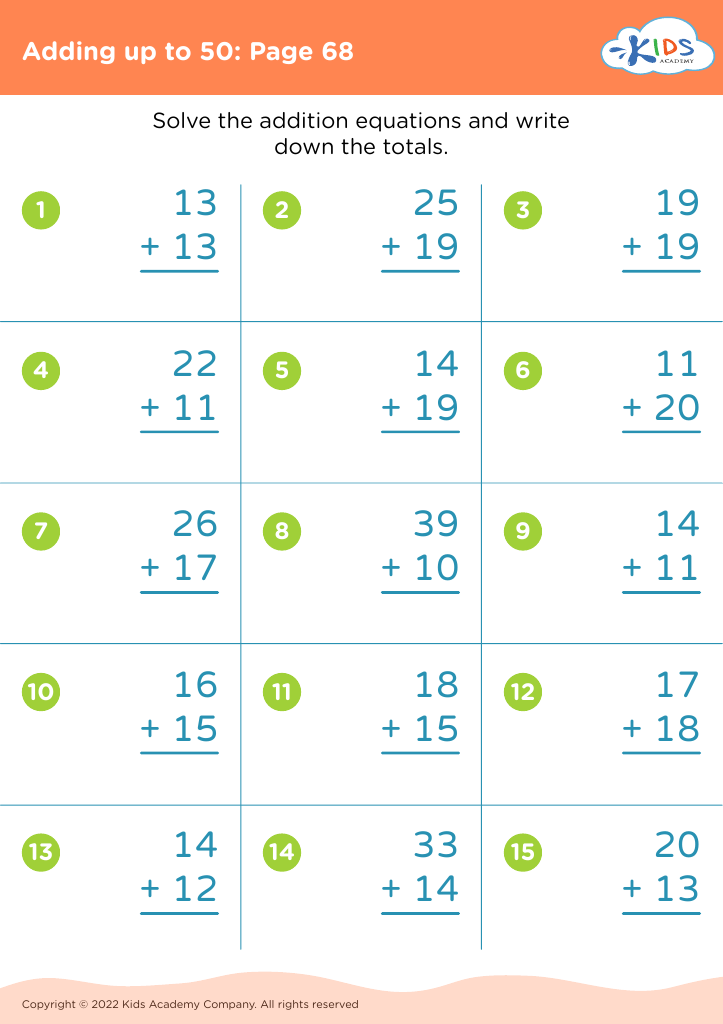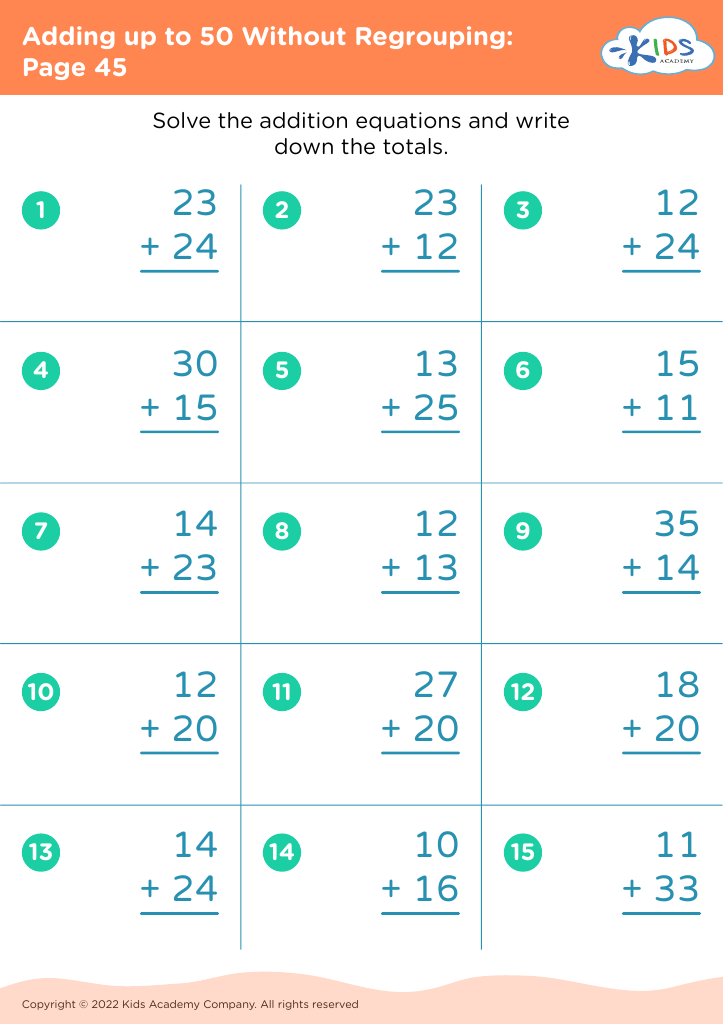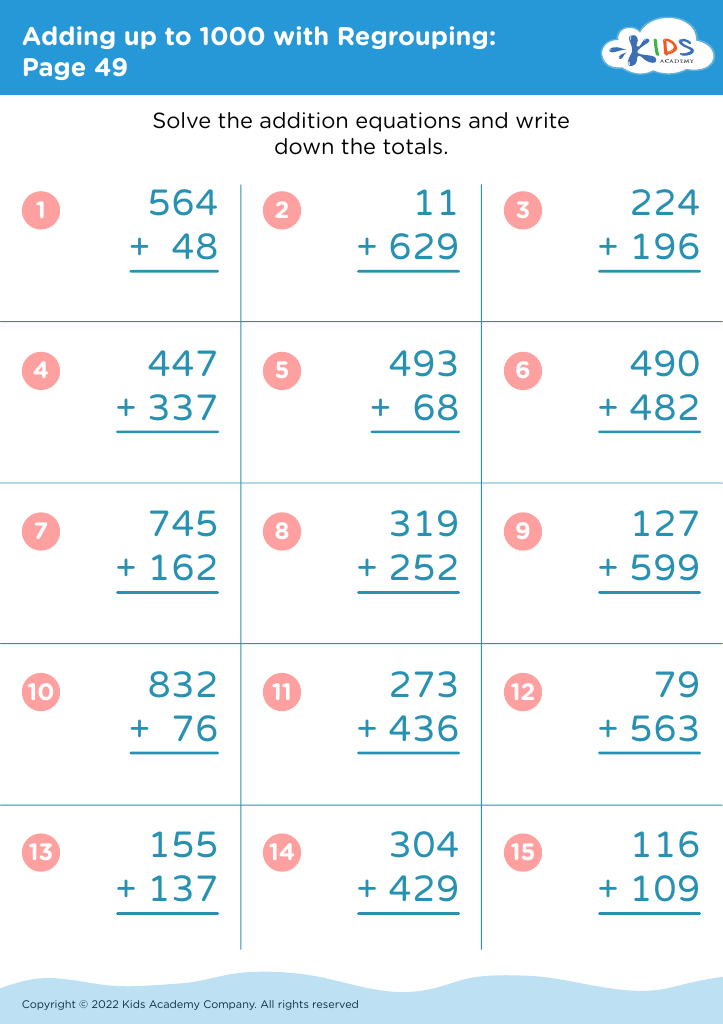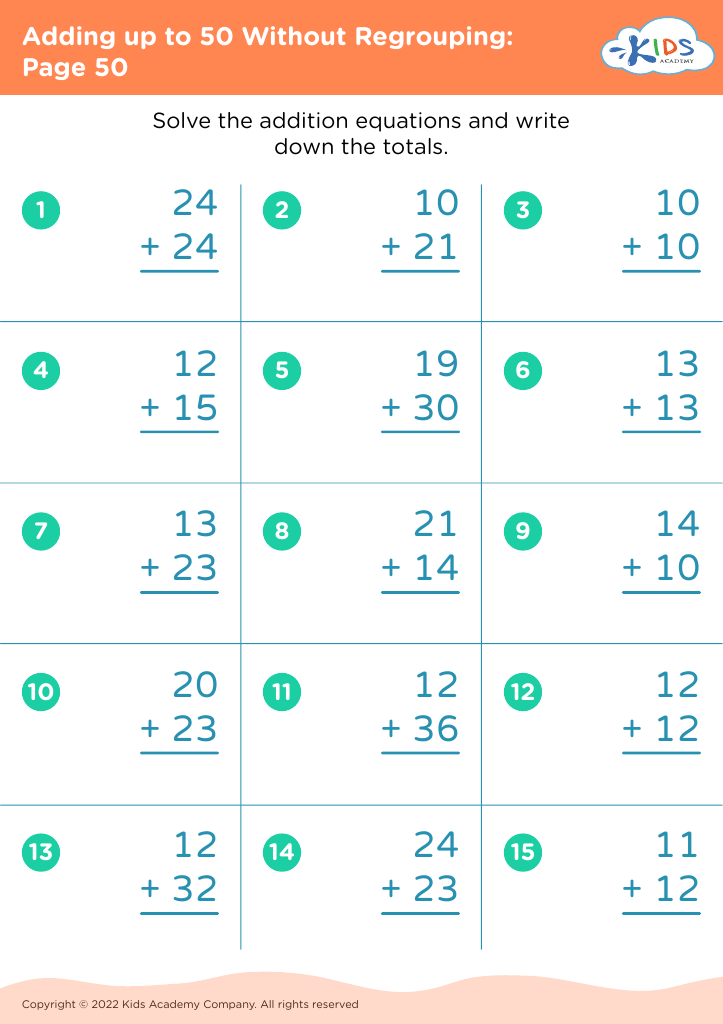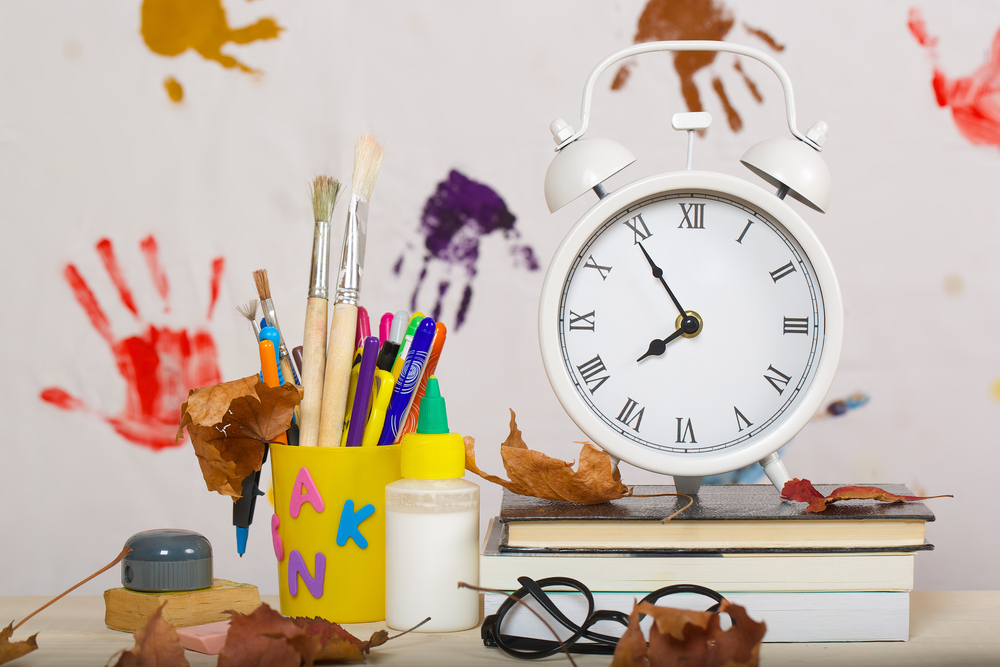Recognizing equivalent fractions Math Worksheets for Ages 8-9
4 filtered results
-
From - To
Discover our engaging Math Worksheets designed specifically for ages 8-9, focusing on Recognizing Equivalent Fractions. Perfect for young learners, these worksheets help students develop a solid understanding of how different fractions can represent the same value. Through interactive exercises, colorful illustrations, and comprehensive practice problems, kids will master the concept of equivalent fractions in no time. These worksheets align with educational standards and are ideal for both classroom and home learning. Start expanding your child's mathematical skills today with our expertly crafted resources! Let's make learning fractions fun and effective.
Recognizing equivalent fractions is an essential math skill, especially for children ages 8-9, as it lays the groundwork for more advanced mathematical concepts and problem-solving techniques. For parents and teachers, fostering an understanding of equivalent fractions can profoundly impact a child's academic success and overall confidence in math.
First, knowing equivalent fractions helps children understand that different fractions can represent the same amount, which is crucial for simplifying fractions. This understanding is foundational for future topics such as adding, subtracting, multiplying, and dividing fractions. When students grasp this early on, they develop a stronger number sense and find it easier to tackle more complex math problems.
Additionally, recognizing equivalent fractions enhances logical reasoning and critical thinking abilities. Children learn to compare and analyze whether fractions are the same despite having different numerators and denominators. This analytical practice sharpens their problem-solving skills and encourages a deeper comprehension of mathematical principles.
Parents and teachers should care about reinforcing this skill because it ensures that children not only perform well academically but also enjoy and appreciate the beauty and applications of math in everyday life. With a solid foundation in fractions, students are better prepared for academic challenges ahead and gain confidence in their ability to overcome them.

